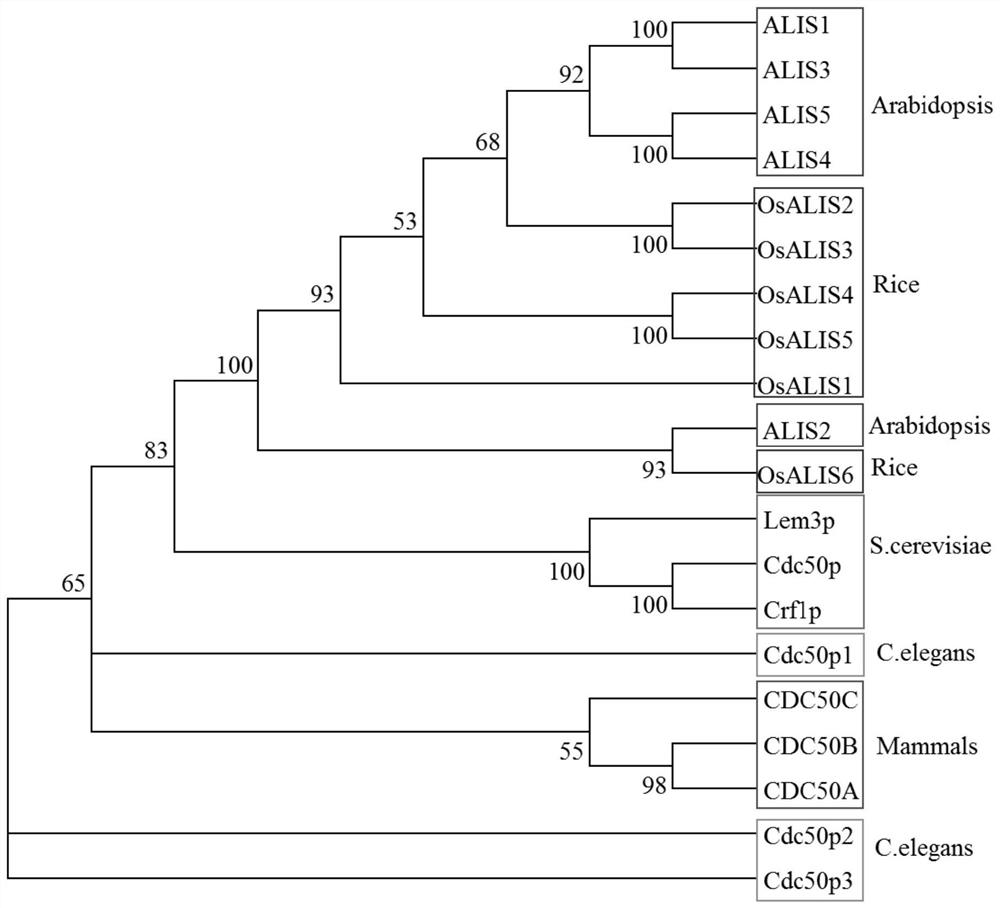OsALIS4 gene for reducing rice setting rate, protein obtained by coding OsALIS4 gene and application of OsALIS4 gene
A technology of seed setting rate and genes, applied in the fields of biotechnology and breeding, which can solve problems such as functional redundancy
- Summary
- Abstract
- Description
- Claims
- Application Information
AI Technical Summary
Problems solved by technology
Method used
Image
Examples
Embodiment
[0035] A preferred embodiment of the present invention provides the application of the OsALIS4 gene in reducing the seed setting rate of rice, specifically including:
[0036] 1. Obtaining homologous gene sequences and making phylogenetic trees
[0037] The protein sequences of yeast, Arabidopsis, and human are all from NCBI, rice is from the Rice GenomeAnnotation Project, and nematodes are from Worm Base. Among them, the codes for obtaining rice protein sequences are as follows: OsALIS1 (LOC_Os09g38768), OsALIS2 (LOC_Os02g07750), OsALIS3 (LOC_Os06g45430), OsALIS4 (LOC_Os03g02830), OsALIS5 (LOC_Os05g45370), OsALIS6 (LOC_Os703g57O) Clustal Omega was used to align and MEGA5.1 was used to make a phylogenetic tree. The sequence analysis results are as figure 1 As shown, there are 6 CDS50 genes in rice. According to the nomenclature of Arabidopsis thaliana, they were named OsALIS1-6, and OsALIS1-5 were all on the same evolutionary branch, and then OsALIS4 was studied.
[0038] 2...
PUM
 Login to View More
Login to View More Abstract
Description
Claims
Application Information
 Login to View More
Login to View More - R&D
- Intellectual Property
- Life Sciences
- Materials
- Tech Scout
- Unparalleled Data Quality
- Higher Quality Content
- 60% Fewer Hallucinations
Browse by: Latest US Patents, China's latest patents, Technical Efficacy Thesaurus, Application Domain, Technology Topic, Popular Technical Reports.
© 2025 PatSnap. All rights reserved.Legal|Privacy policy|Modern Slavery Act Transparency Statement|Sitemap|About US| Contact US: help@patsnap.com



